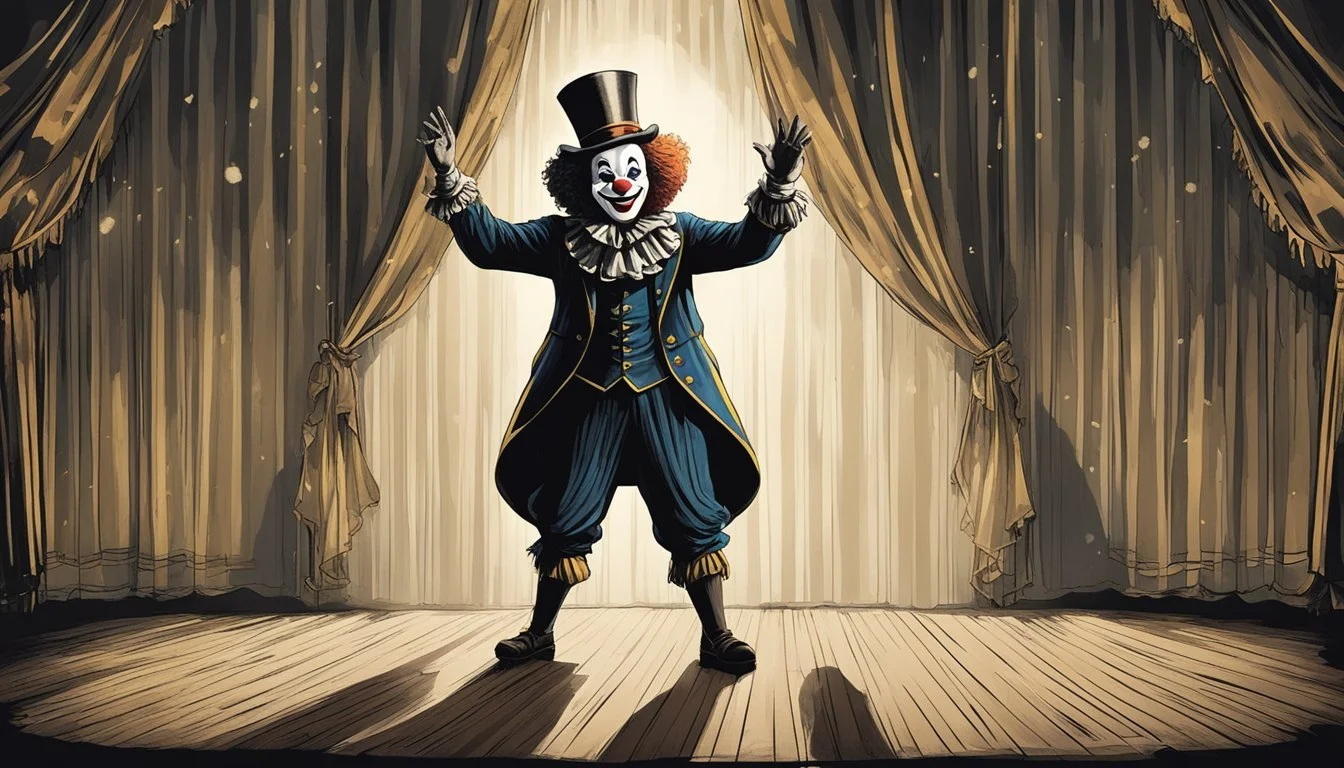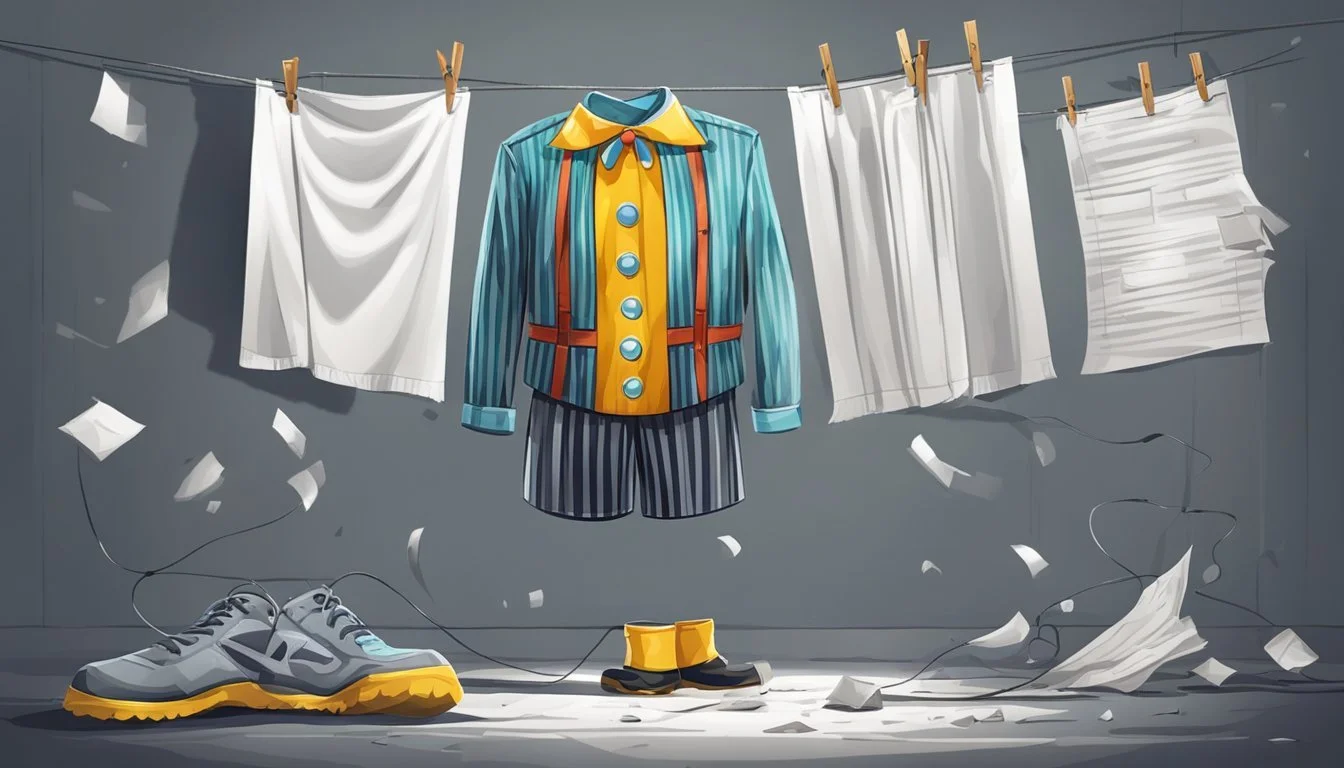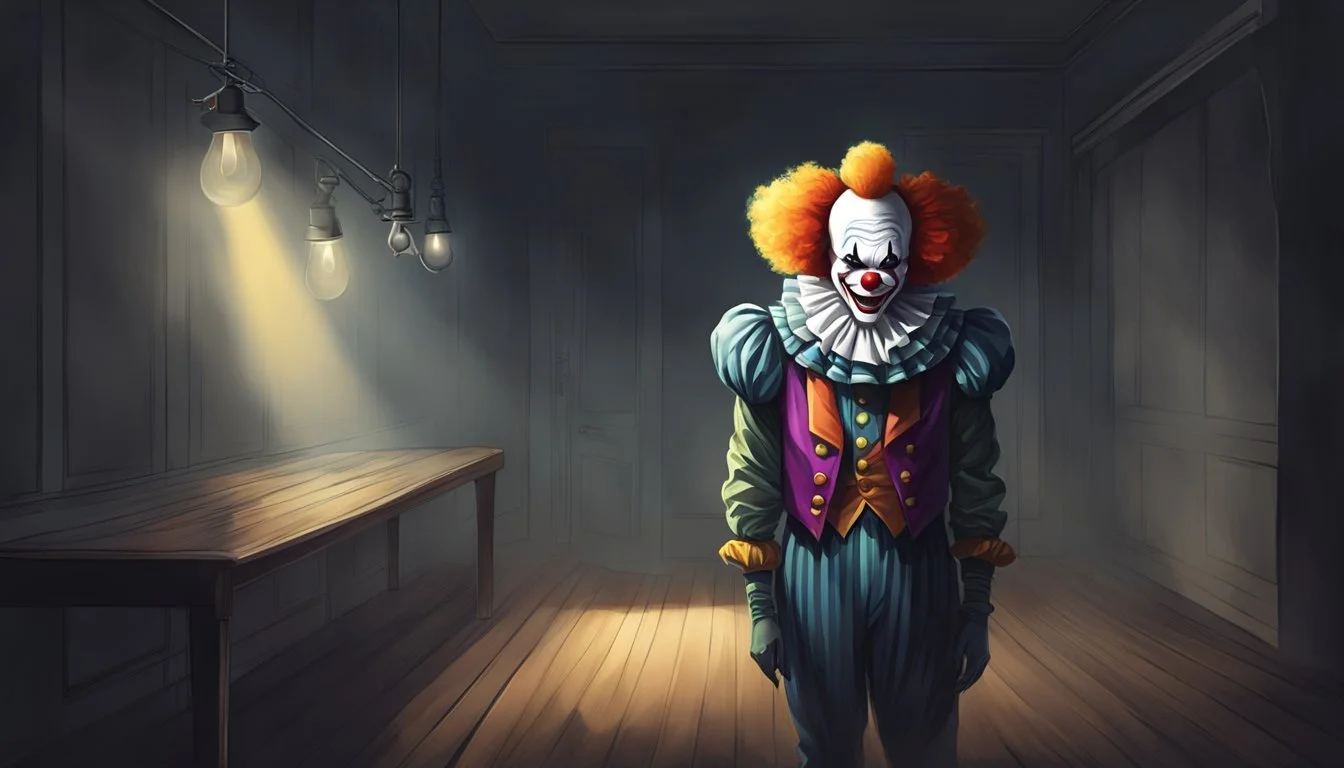John Wayne Gacy's Clown Curtain Call: Killer Clown's Execution
Final Act for America's Notorious Serial Killer
John Wayne Gacy, known as the "Killer Clown," met his end on May 10, 1994, at Stateville Correctional Center in Illinois. Convicted of murdering 33 young men and boys, Gacy's execution marked the conclusion of a horrifying chapter in American crime history.
Gacy's execution by lethal injection came after years of legal battles and appeals. His final words, uttered moments before his death, reflected the chilling lack of remorse that characterized his crimes. The event drew significant media attention, cementing Gacy's infamy in the public consciousness.
Gacy's crimes and subsequent execution left an indelible mark on popular culture. His dual identity as a seemingly ordinary businessman who performed as a clown at children's parties, juxtaposed with his brutal acts, sparked a lasting fascination. This fascination has fueled numerous documentaries, books, and films exploring the depths of Gacy's depravity and the impact of his crimes.
John Wayne Gacy: The Man Behind the Mask
John Wayne Gacy led a double life as a respected businessman and volunteer by day, and a vicious serial killer by night. His public persona masked the dark reality of his crimes.
Early Life and Childhood
John Wayne Gacy was born on March 17, 1942, in Chicago, Illinois. He grew up in a working-class family with an abusive, alcoholic father. As a child, Gacy struggled with health issues and faced ridicule from his peers.
He moved to Las Vegas briefly as a young adult, working in a mortuary. Gacy later returned to Chicago, married, and had two children. He managed a KFC restaurant and became active in local politics and community organizations.
In 1968, Gacy was convicted of sexually assaulting two teenage boys in Waterloo, Iowa. He served 18 months of a 10-year sentence before being paroled in 1970.
Pogo the Clown and Public Persona
After his release, Gacy settled in Norwood Park, a Chicago suburb. He started a successful construction business and became known for his community involvement.
Gacy joined a local "Jolly Joker" clown club, creating the character "Pogo the Clown." He performed at children's hospitals, charity events, and birthday parties. This cheerful alter ego contrasted sharply with his true nature.
His clown activities and charity work helped Gacy build a respectable public image. He hosted neighborhood parties and political fundraisers at his home. Few suspected the horrors taking place beneath the surface of his seemingly normal life.
Gacy's Criminal History
John Wayne Gacy's criminal activities spanned several years and involved numerous victims. His crimes escalated from sexual assault to serial murder, leaving a trail of devastation in his wake.
Convictions and Incarceration
Gacy's first major conviction came in 1968 for sodomy. He was sentenced to 10 years in the Anamosa State Penitentiary in Iowa. However, he served only 18 months before being released on parole in 1970.
After his release, Gacy moved to Chicago. He appeared to lead a normal life, working as a construction contractor and performing as a clown at children's parties.
Despite his outward appearance, Gacy continued to commit crimes. He was arrested several times for sexual assault but managed to avoid serious consequences.
Timeline of Murders
Gacy's killing spree began in 1972 and continued until 1978. During this period, he murdered at least 33 young men and teenage boys.
His first known victim was Timothy McCoy, a 16-year-old boy whom Gacy stabbed to death in January 1972.
Most of Gacy's victims were lured to his home with promises of construction work or alcohol. Once there, he would typically strangle them with a tourniquet.
Gacy buried 26 of his victims in the crawl space beneath his house. Three others were buried elsewhere on his property, while four were dumped in the Des Plaines River.
The Disappearance of Robert Piest
The disappearance of 15-year-old Robert Piest on December 11, 1978, led to Gacy's downfall. Piest was last seen at a pharmacy where Gacy had been working.
Police quickly identified Gacy as a suspect. They obtained a search warrant for his house, where they discovered evidence of multiple murders.
On December 21, 1978, Gacy confessed to killing about 30 people. He was arrested and charged with murder.
Piest's body was eventually recovered from the Des Plaines River in April 1979, providing crucial evidence for the prosecution.
Investigation and Arrest
The investigation into John Wayne Gacy's crimes began in late 1978 and quickly unraveled his facade as a respected businessman. Key breakthroughs led to Gacy's arrest and shocking confession.
Deciphering Clues
Police started investigating Gacy after 15-year-old Robert Piest went missing on December 11, 1978. Piest was last seen at a pharmacy where Gacy had been working. Detectives soon discovered Gacy's criminal history, including a prior sodomy conviction.
Surveillance of Gacy's home revealed suspicious activity. A search warrant was obtained on December 13. Officers found items belonging to several missing young men, including wallets and driver's licenses.
Breakthroughs in the Case
On December 21, police found human remains in Gacy's crawl space. The discovery led to his arrest the next day. Investigators ultimately recovered 29 bodies from Gacy's property.
Four additional victims were found in the Des Plaines River. Gacy had dumped them there when he ran out of room under his house.
Forensic evidence played a crucial role. Fibers from Gacy's home matched those found on victims' bodies. Receipts and appointments linked Gacy to several missing persons.
Gacy's Confession
After his arrest, Gacy confessed to 33 murders. He provided detailed accounts of how he lured young men to his home, often using the promise of construction work.
Gacy described his method of killing: strangulation with a rope or garrote. He frequently used handcuffs to restrain his victims.
His confession revealed a pattern of targeting vulnerable young men and boys. Many victims were hitchhikers or male prostitutes. Gacy's role as "Pogo the Clown" at children's parties added a chilling dimension to his crimes.
Aftermath and Execution
John Wayne Gacy's capture marked the beginning of a lengthy legal process culminating in his execution. His time on death row and final moments revealed complex facets of the justice system and the killer's psyche.
Legal Proceedings
Gacy's trial began on February 6, 1980, in Cook County, Illinois. Prosecutor William Kunkle presented overwhelming evidence, including Gacy's confessions and the remains found beneath his house. The defense argued insanity, claiming Gacy suffered from multiple personality disorder.
On March 13, 1980, after deliberating for less than two hours, the jury found Gacy guilty of all 33 murders. He received 12 death sentences and 21 natural life terms. Gacy's case became one of the most notorious in American criminal history.
Death Row Experience
Gacy spent 14 years on death row at Menard Correctional Center in Illinois. He exhausted numerous appeals, maintaining his innocence and claiming police framed him. During this time, Gacy took up painting, often depicting clowns.
He gave several interviews, showing no remorse for his crimes. Gacy's artwork gained notoriety, with some pieces selling for thousands of dollars. This commercialization of his infamy sparked controversy and outrage among victims' families.
Execution by Lethal Injection
On May 10, 1994, Gacy was transferred to Stateville Correctional Center for execution. His last meal included fried chicken, french fries, fresh strawberries, and Diet Coke. Gacy's final statement was reportedly, "Kiss my ass."
At 12:58 AM, the execution began. Gacy received an injection of sodium thiopental, pancuronium bromide, and potassium chloride. The lethal injection process took 18 minutes, longer than expected due to clogged IV lines.
Gacy was pronounced dead at 1:11 AM. His execution drew significant media attention, with protesters both supporting and opposing the death penalty gathered outside the prison.
Cultural Impact
John Wayne Gacy's crimes and "killer clown" persona left a lasting mark on American culture. His case sparked widespread fear of clowns and influenced artistic depictions of serial killers.
Urban Legends and Public Fear
Gacy's dual identity as a clown performer and serial killer fueled a surge in coulrophobia - the fear of clowns. This fear spread through urban legends and word-of-mouth, transforming the once-jovial image of clowns into something sinister.
The "evil clown" trope gained traction in popular culture, appearing in horror films, novels, and TV shows. Gacy's legacy contributed to the unsettling nature of characters like Pennywise from Stephen King's "It."
Many parents became wary of hiring clowns for children's parties. The association between Gacy and clowns led to a decline in the clown entertainment industry.
Gacy in Art and Media
Gacy's crimes inspired numerous artistic works. Paintings by Gacy himself, created while on death row, became controversial collectors' items. Some viewed them as insight into a killer's mind, while others saw them as tasteless exploitation.
Several films and TV series dramatized Gacy's life and crimes. Notable examples include "To Catch a Killer" (1992) and "Gacy" (2003). These productions often emphasized his clown persona, further cementing the "killer clown" image in public consciousness.
Documentaries like "The John Wayne Gacy Tapes" (2022) used archival footage and interviews to examine Gacy's psychology and impact on his victims' families.
True Crime and Legacy
Gacy's case became a cornerstone of true crime literature and media. Books like "Killer Clown" by Terry Sullivan detailed the investigation and trial, captivating readers with the chilling contrast between Gacy's public and private personas.
The Gacy case influenced criminal profiling techniques. Law enforcement agencies studied his methods to better understand serial killer behavior and improve investigation strategies.
Gacy's crimes prompted increased awareness of missing persons cases, particularly those involving young men. His ability to operate undetected for years highlighted vulnerabilities in law enforcement practices of the time.
Evidence and Psychology
John Wayne Gacy's crimes revealed a chilling pattern of predatory behavior and a disturbed psychological profile. His methods of luring and killing victims, coupled with the gruesome discovery of bodies in his home, painted a horrifying picture of a serial killer.
Psychological Profile
Gacy's childhood experiences likely contributed to his later criminal behavior. He endured physical and emotional abuse from his father, who belittled him for perceived lack of masculinity. This traumatic upbringing may have fueled his violent tendencies and desire for control.
Experts diagnosed Gacy with antisocial personality disorder, characterized by a lack of empathy and disregard for others' rights. He exhibited traits of narcissism and sadism, deriving pleasure from dominating and harming his victims.
Gacy's dual persona as a respected community member and brutal killer demonstrated his ability to compartmentalize his life. This split allowed him to maintain a façade of normalcy while committing heinous acts.
Modus Operandi
Gacy targeted young men and boys, often luring them with promises of construction work or money. He used his reputation as a successful businessman and his alter ego "Pogo the Clown" to gain trust.
Once alone with his victims, Gacy would overpower them, typically using a "rope trick" as a pretext to restrain them. He would then sexually assault and strangle his victims, often using a tourniquet method.
Gacy's killing spree lasted from 1972 to 1978, claiming at least 33 lives. His victims ranged in age from 14 to 21, with many being vulnerable runaways or sex workers.
Common Grave: The Crawlspace
The crawlspace beneath Gacy's home became a macabre burial ground for 26 of his victims. This grim discovery shocked investigators and the public alike.
Gacy methodically buried bodies in trenches, covering them with lime to hasten decomposition. The cramped space made excavation challenging for forensic teams.
The remaining victims were found in the Des Plaines River, where Gacy disposed of bodies when the crawlspace became full. This change in disposal method ultimately led to his capture, as witnesses spotted him near the river.
Gacy's Personal Life
John Wayne Gacy led a complex personal life marked by family struggles, business success, and community involvement. His public persona often contrasted sharply with his hidden criminal activities.
Family Dynamics
Gacy's childhood was troubled. He faced abuse from his alcoholic father, who belittled him constantly. This difficult upbringing likely contributed to his later psychological issues.
Gacy married twice. His first marriage to Marlynn Myers in 1964 ended in divorce after he was convicted of sodomy. They had two children together.
In 1972, Gacy married Carole Hoff. This marriage lasted until 1976, ending due to Gacy's erratic behavior and sexual preferences.
Business Ventures and Community Involvement
Gacy founded PDM Contractors, a successful construction business, in the late 1960s. The company specialized in remodeling and maintenance work.
He became active in local politics and community organizations. Gacy joined the Jaycees, rising to become a precinct captain.
His involvement extended to charitable work. Gacy often performed as "Pogo the Clown" at children's hospitals and fundraising events.
Personal Relationships and Reputation
Gacy cultivated a respectable image in his community. Many saw him as a hardworking businessman and generous neighbor.
He managed a Kentucky Fried Chicken restaurant in Iowa before moving back to Chicago. This experience helped him develop management skills.
Gacy's charm and outgoing personality allowed him to gain trust easily. He often hired young men for his construction business, using this as a way to find victims.
Despite his public facade, some who knew Gacy sensed something was off. His mood swings and occasional violent outbursts raised concerns among those closest to him.
The Final Curtain: Gacy's Last Moments
On May 10, 1994, John Wayne Gacy faced his execution at Stateville Correctional Center in Illinois. The notorious "Killer Clown" had been on death row for over a decade following his conviction for the murder of 33 young men and boys.
Gacy's final meal consisted of a dozen fried shrimp, a bucket of original recipe KFC chicken, french fries, and a pound of strawberries. This extravagant last supper reflected his larger-than-life persona.
As the execution approached, Gacy remained defiant. When asked if he had any last words, he snarled, "Kiss my ass." This crude statement encapsulated his unrepentant attitude until the very end.
The execution was carried out by lethal injection. Gacy was strapped to a gurney and administered a cocktail of deadly chemicals. The process took approximately 18 minutes from start to finish.
Gacy's death marked the end of a lengthy legal battle. He had spent years filing appeals and attempting to delay his execution. His demise brought a sense of closure to the families of his victims.
The execution of John Wayne Gacy reignited debates about the death penalty in the United States. Some viewed it as justice served, while others questioned the ethics of capital punishment.







